Gin&Platonic: Sounds plucked off the floor after dripping through a black hole
Published February, 2025
by Freddie Hudson
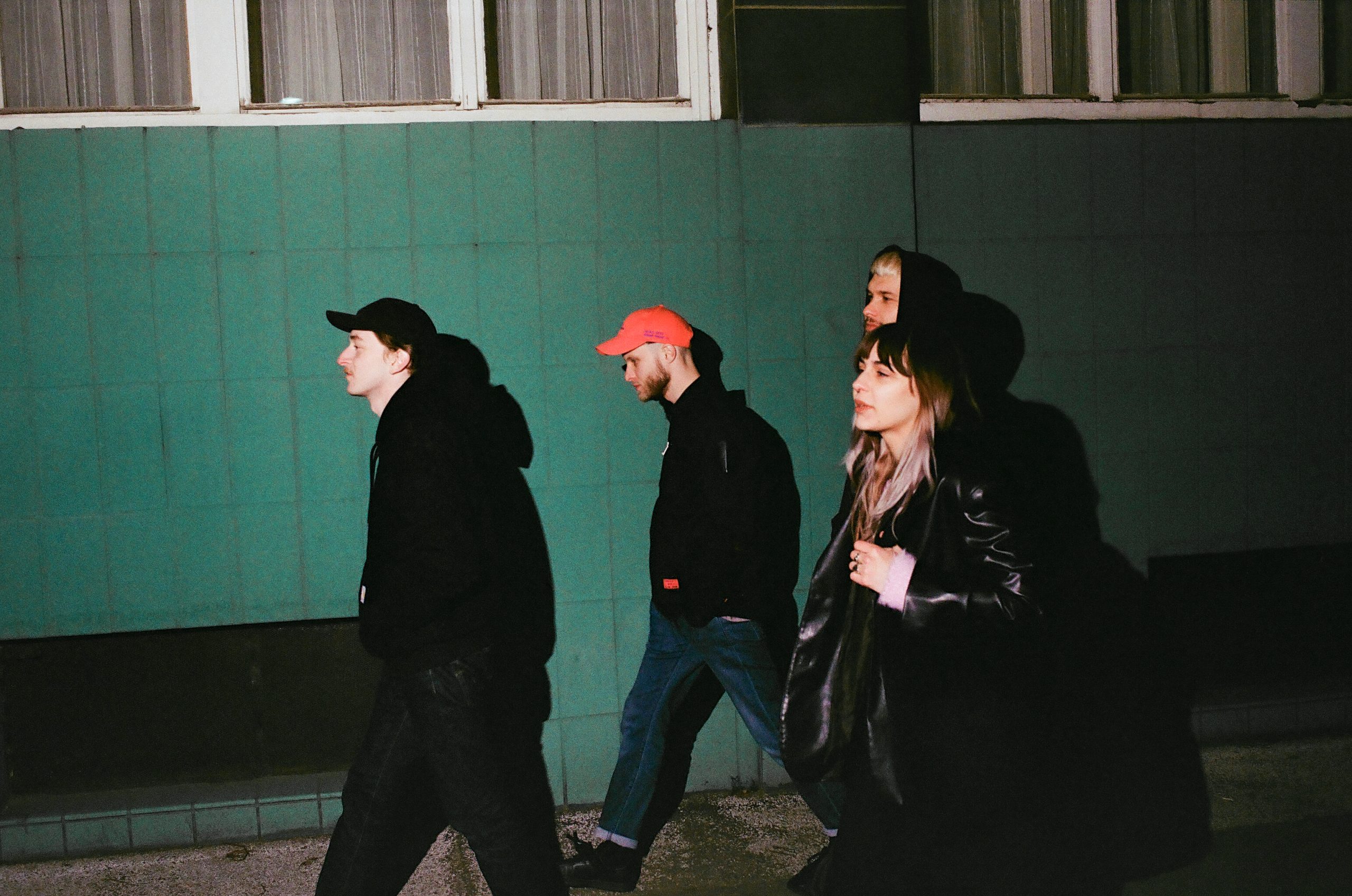
Likely my favourite musical discovery since moving to Czechia has been the nascent experimental and ambient scene; here is a hive of musicians, thrumming with activity, making amazing and strange music to fill your ears with. The threshold for performing feels quite low here, and as a result there are many exploratory performances, collectives, labels and venue spaces that often do invaluable work in supporting smaller-scale musicians.
This ‘ambient and experimental scene’ wears a coat of many colours, and in this piece I look at one subsection — note that I do not say a single colour — in the form of a record label that moves mountains through utterly bizarre landscapes of its own making, Gin&Platonic. Though there is a strong undercurrent in Czechia of more “folk-y” ambient music, also occasionally seen in the catalogue of Slovak label Warm Winters or friendly satellites, there’s another side to the local scene’s tastes which is reflected in the “advanced electronic music and new media art” adáge sported by Prague’s native Lunchmeat Festival.
However, in the significant vacuum left in the dissolution of tape sensation Genot Centre, there’s not many local labels left who regularly produce the same kind of dizzyingly complex digital ””ambient”” music — other, that is, than Gin&Platonic. In an interview I held with Egyptian artist ABADIR, he mentioned his love for the label: where on other labels one or two out of five releases might hit the spot, “with Gin&Platonic,” he tells me, “it’s more like four, or five out of five”. That in itself says a lot about ABADIR’s own exploratory taste in music: you really can never know what will come next, beyond the fact it’ll be something new. Picking any four releases would do the same job, but here’s a tour of the most recent:
February 2nd saw the release Italian producer nesso’s ‘Algorave Express’, and much of the substance is written on the tin: sounds, seemingly plucked off the floor after dripping through a black hole, meet various algorithmically processed particle accelerators, and nesso fashions the resultant splatter into endlessly transforming poly-everything club wreckers.
A step backwards, and we’re in the debut release of sorbitol drops, a Czech musician with “an ear for crispy refined sound design”, clattering, collapsing percussion, and crafting microscopic scenes of intense musical beauty that bud, bloom and wither in as little time it took you to realise it was being made right in front of you. The sound is inimitable, and yet fully placeable as “right” for Gin&Platonic — many of the other regional artists I’ve been exposed to through the label also mine the same rich mineral veins described above.
The third step back, and Racine’s ‘Boue’ (French for ‘mud’) sees the Canadian sound artist shrug the cloak of rather intimidating material he’s worn on his two solo releases for Danse Noire, and churn up thick and squelching near-techno stompers — angry, somehow, or bitterly disappointed at least, and in that they share emotion with the rest of his repertoire, but Racine showed fresh textures here not so thoroughly explored in his other releases.
Your final stop on this miniature tour is aircode with another trip brimming with dark emotion: ‘Disgust’ fills a void of simmering rage normally only sated by Pessimist or De Babalon, masters of that craft, and elsewhere on the album you hear sounds airlifted out of a peak-era grime archive. But aircode tests fresh ice with confident, well-placed steps. You never fall through the tension, thin as it gets.
Gin&Platonic has impeccable curation, and glistening mastering on every release but, despite the precedent, they’re not an inaccessible catalogue: releases are priced exceedingly low, especially considering the standard of material. Every album and EP shapes up a roster of exemplary crafters of sound — from a mix of Czech and foreign providence — and as it does so shapes up a uniquely individual singular sonic identity.
I heard this in action through thrillingly exploratory and inventive live sets from Lila Tesla, Kodiki and nesso at the label’s recent event in Ankali. Those micro-sound worlds I mentioned early returned, but alongside freakish mutations on jungle and hardcore that, having thoroughly scraped the mental archives, I’ve not heard the like of to date. To make better on what little I truly understand of one of Czechia’s finest, I sent over a few questions, and opened the floor for them to talk about their labour of love in their own words.
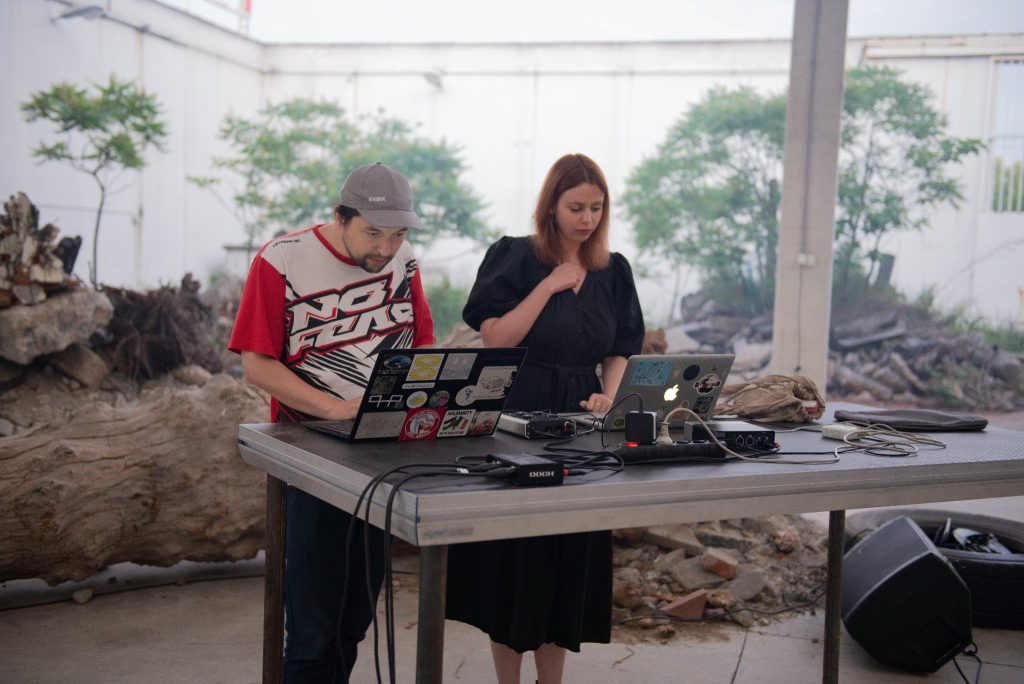
Interview
Can you start by explaining how the label came to be in the first place? Who were your first artists, and why did you release them?
Tomáš: Gin&Platonic originally started as an enthusiastic music blog, featuring texts from a loose collective of writers. The collective gradually settled, and we started releasing various mixes from our favorite producers. That’s when the idea of starting a label began to take shape – we’d dreamed about it for a long time, and it just felt like the natural next step.
Our first release was a compilation with a pretty wild mix of genres: Chinese suicide pop, anti-club dance tracks, post-ambient stuff etc. The common thread for me has always been experimental electronic music. We reached out to producers whose music really clicked with us – often people we already had some connection with through the blog.
Martin: The blog-to-label transition happened as we kinda felt like we’d want to contribute, not just to continue informing and outlining what we liked. The first few years of the label me & Jirka (our graphic designer) were still in college, goofing around, trying to come up with different physical editions for the releases etc., just having fun on the go. Personally, looking back both the blog and later the label has served as a way of coping with how life was for me throughout these early years, to be honest .. systematic overcoming of longing.
How did you proceed from these first steps? What were some important inspirations for you in curating the label? [other labels or projects]
T: At first, we weren’t sure if we wanted to focus just on the label or keep running both the label and the blog. Over time, it evolved into the label because it combined everything we loved about the blog – discovering music, sharing it, and passing it on – but on a whole new level, and we just didn’t have time for the blog anymore. We’ve drawn inspiration from both local labels (we always say it, but Genot Centre was a big one) and various labels abroad focusing on experimental electronic music (Quantum Natives, UIQ, Orange Milk, Conditional, PAN…).
M: These for sure, and much earlier examples like Stones Throw and Warp were also a huge influence on my taste back in my teens, and were crucial for me in understanding what role and impact a music label can have. Generally I enjoy seeing a well-curated and peculiar project of any kind. Nowadays especially certain fashion labels I consider inspiring on how curation and world-building can be executed and presented at the intersection of various practices and media (OTTO 958 comes to mind for example). But that’s not really what we aspire to do with G&P as our resources are very limited. We just do our best to keep going steadily and release music we love.
What makes your label different from others? How do you shape your voice?
T: Hard to say. We try to stay in close contact with the artists we release, putting a lot of care into their music and the whole process – something that probably comes from both me and Martin working with people in social work and psychology. I’m not saying other labels don’t do this, but it’s just how we approach it. An important part of G&P is our graphic designer Jirka (Macků), who takes care of all the visuals and covers, so I’d say we have a cohesive visual identity.
M: Not sure if necessarily different, but something definitely significant is that we still mostly provide as much agenda as we can (covers, write-ups, communication with press etc.) and generally navigate the whole process within the same group of four friends, independent of any external resources (except for the events). That makes us oftentimes sluggish and limited in general, but it allows us to just do everything all by ourselves, on our own terms, and at a sustainable pace. And, as Tomas has mentioned, to have a cohesive and distinctive visual identity has been crucial for us since the beginning.
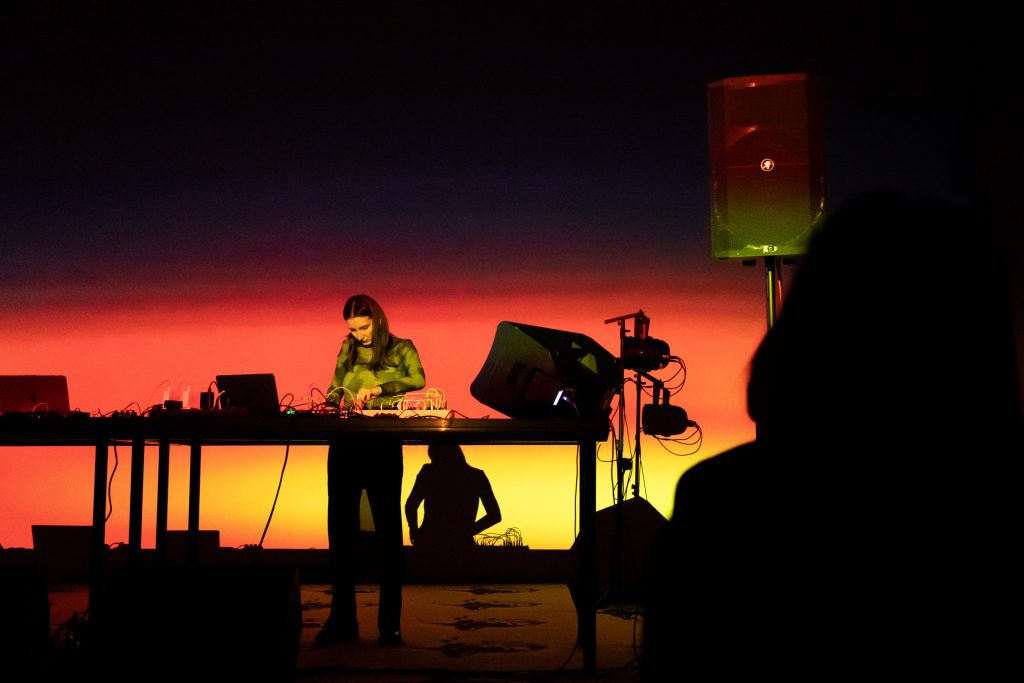
Could you describe the label’s sound?
T: I probably don’t have enough distance from it, but I like to think our releases sound adventurous, at times entertainingly absurd, and maybe even offer a glimpse into some kind of “future” music. When I listen to music, it’s the kind of sound I often seek out, so that naturally carries over into the label.
M: This is an abstract one, hard to describe. ‘Adventurous’ is well-fitting. I believe there is a certain common denominator in the G&P sound, or at least a few branches loosely grouping into some clusters. To a complete stranger I tend to describe it as very ‘digital’ in a way, oftentimes quite ‘visceral’,… ‘for the heads’.
How would you say the recent releases have reflected (or challenged) that description?
M: We’re soon releasing an EP by Italian producer and live coder nesso, which holds the term ‘algorave’ in the very name of the project. Regarding algorave we definitely have a string of it throughout our catalogue.
T: As Martin mentions, I don’t feel like our sound has changed significantly and at the same time, we try not to lock ourselves into just one sonic identity.
Is there anything that is important for a label to do, in your opinion?
T: To love music more than life? I really don’t know…
M: Just to keep going seems to be the biggest challenge for off-grid labels these days. Hand in hand with self-releasing and self-promoting becoming easier for the artists, the amount of new stuff out there rises constantly and for a listener it can be hard to keep up in this economy of attention. So the mission more than ever is to continue offering a certain vision and taste to the listeners and fans, to keep connecting dots and gather the like-minded – aspire to shape a community. Create some buzz. Offer a platform for new artists.
T: A lot of similar labels are shutting down these days. Personally, I see differences in releasing music compared to five years ago and now. There used to be more platforms focused on experimental music, writing about it, and “connecting the dots”. The overall response was generally bigger. How much of it is due to the situation in the world is probably a topic for a different and more extensive conversation.
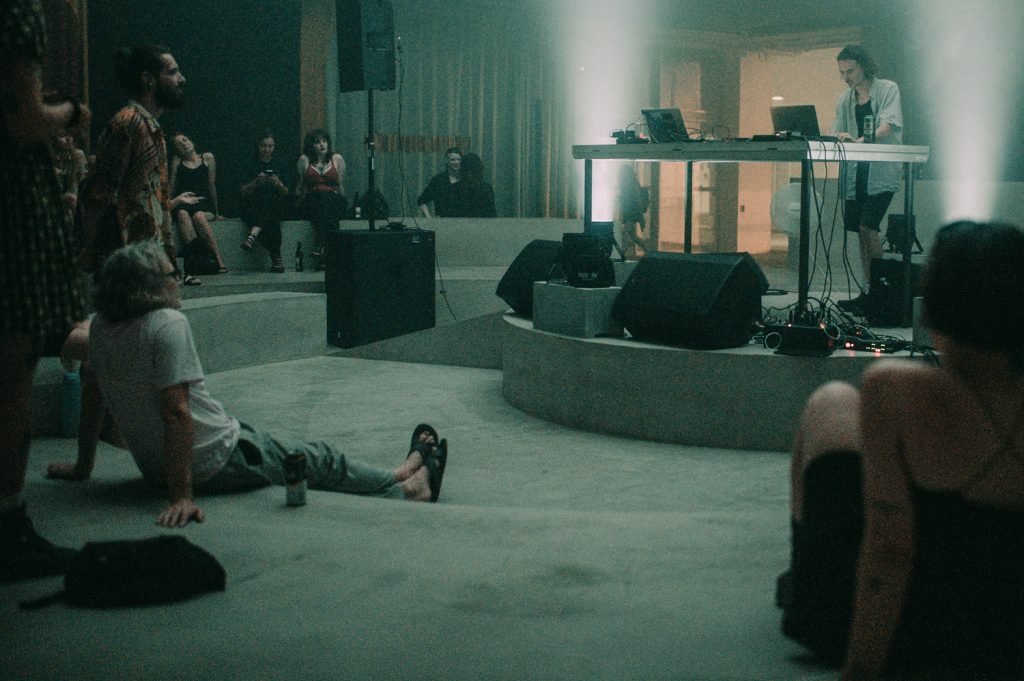
Will we see more live events like the one recently in Ankali?
M: As our beloved ‘Bauhaus’ space operated by PLATO Ostrava gallery has come to an end, we’re now in a process of searching and trying out ways we can continue to organize such regular events to which we invite people whose music we release & some of our other fav artists. We’d love to continue doing so in Ostrava, and we’re talking about expanding to Prague too. It’s in the works. Anyway, Bukolika Festival, for which we co-curate the music programme, is hopefully a staple at this point.
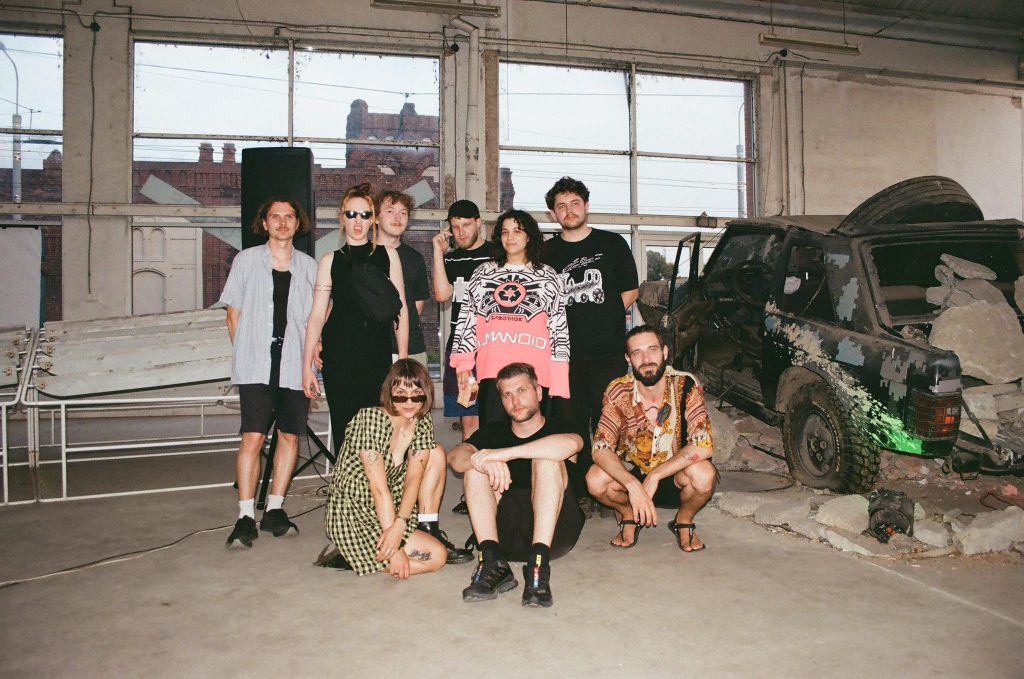
Text: Freddie Hudson
Photos: Gin&Platonic, Anet Jursova
This article is brought to you as part of the EM GUIDE project – an initiative dedicated to empowering independent music magazines and strengthen the underground music scene in Europe. Read more about the project at emgui.de.
Funded by the European Union. Views and opinions expressed are however those of the author(s) only and do not necessarily reflect those of the European Union or the European Education and Culture Executive Agency (EACEA). Neither the European Union nor EACEA can be held responsible for them.